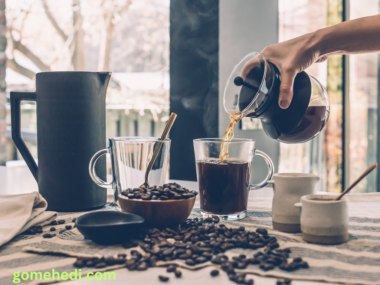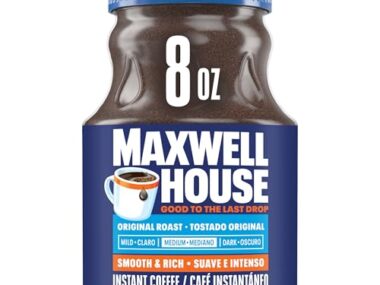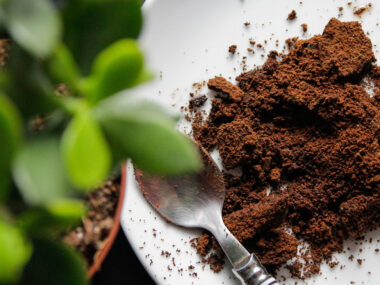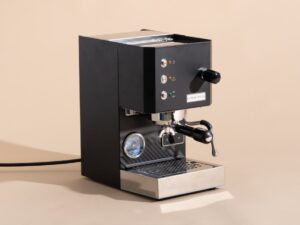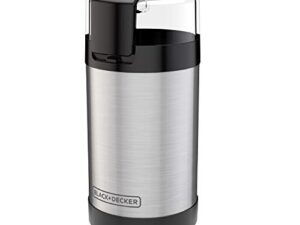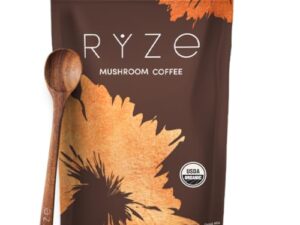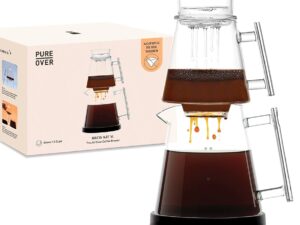Instant coffee is a popular choice for quick caffeine fixes. But how much caffeine does it really have?
Instant coffee is convenient and easy to make, but many wonder about its caffeine content. Understanding the caffeine levels in instant coffee helps you manage your intake and make informed choices. Some people need a strong boost to start their day, while others prefer a milder option.
Knowing the caffeine content can also help you avoid overconsumption, which may lead to jitters or disrupted sleep. In this post, we’ll explore how much caffeine is in instant coffee, comparing it to other types of coffee, and providing tips for choosing the right amount for your needs. Stay tuned to learn more about your favorite quick brew.

Credit: cafely.com
Caffeine Basics
Understanding how much caffeine is in your instant coffee starts with knowing the basics of caffeine itself. Caffeine is a natural stimulant found in various plants, foods, and beverages. Knowing the sources and effects of caffeine can help you make informed choices about your coffee consumption.
What Is Caffeine?
Caffeine is a natural compound found in coffee, tea, and other plants. It stimulates the central nervous system, helping to ward off drowsiness and restore alertness. Here are some key points to understand about caffeine:
-
Stimulant: Caffeine is a psychoactive substance. It blocks the action of adenosine, a brain chemical involved in sleep.
-
Natural Occurrence: It is found in the seeds, nuts, and leaves of various plants.
-
Consumption: People consume caffeine through coffee, tea, energy drinks, and certain foods.
-
Health Effects: It can improve mood, reaction time, and cognitive function. But, it may also cause insomnia, jitters, and increased heart rate.
For a clearer understanding, here’s a table summarizing some of the effects and sources of caffeine:
|
Effect |
Source |
|---|---|
|
Increased Alertness |
Coffee, Tea |
|
Improved Mood |
Energy Drinks |
|
Faster Reaction Time |
Dark Chocolate |
|
Temporary Insomnia |
Soda |
Caffeine Sources
Caffeine is not only found in coffee. It’s present in a variety of foods and beverages. Knowing where caffeine is found can help you manage your intake better:
-
Coffee: The most common source. A typical cup contains about 95 mg of caffeine.
-
Tea: Both black and green teas contain caffeine, usually around 30-50 mg per cup.
-
Soft Drinks: Many sodas have caffeine. A can of cola typically has about 35 mg.
-
Energy Drinks: These can contain anywhere from 50 to 200 mg of caffeine per serving.
-
Chocolate: Especially dark chocolate, which can have up to 30 mg per ounce.
-
Medications: Some over-the-counter medications contain caffeine to enhance pain relief.
Here’s a quick look at the caffeine content in common sources:
|
Source |
Caffeine Content |
|---|---|
|
Instant Coffee |
30-90 mg per cup |
|
Black Tea |
30-50 mg per cup |
|
Energy Drink |
50-200 mg per serving |
|
Dark Chocolate |
20-30 mg per ounce |
|
Cola |
35 mg per can |
Understanding these sources helps you track your daily caffeine intake more effectively.
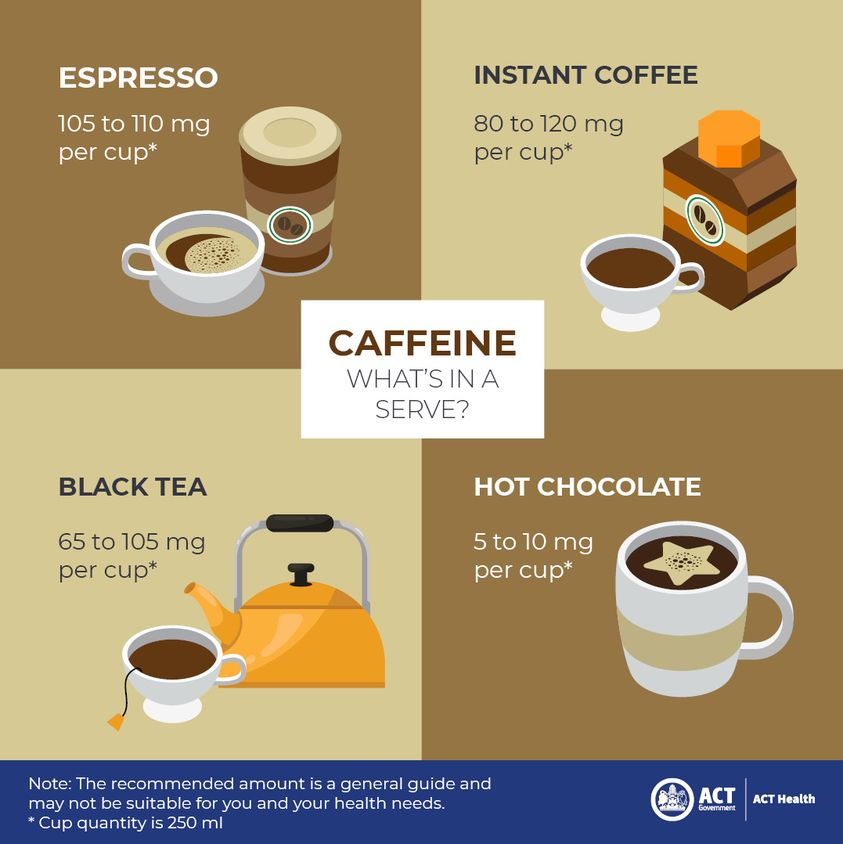 ttt
ttt
Credit: x.com
Instant Coffee Types
Instant coffee is a popular choice for coffee lovers who crave convenience without sacrificing taste. Knowing the types of instant coffee available can help you decide which one suits your needs best. This section will explore two main types: freeze-dried instant coffee and spray-dried instant coffee.
Freeze-dried Instant Coffee
Freeze-dried instant coffee is known for its superior flavor and aroma. The freeze-drying process preserves the coffee’s natural oils and compounds, resulting in a richer taste.
The process involves:
-
Brewing coffee to a concentrated form
-
Freezing the coffee into solid ice
-
Breaking the frozen coffee into small pieces
-
Removing the ice crystals through sublimation
This method retains more of the coffee’s original characteristics, making it a popular choice among coffee enthusiasts. Freeze-dried coffee also tends to have a slightly higher caffeine content compared to spray-dried options.
Here’s a quick comparison of the caffeine content in freeze-dried instant coffee:
|
Brand |
Caffeine Content (mg per 8 oz) |
|---|---|
|
Brand A |
70-80 mg |
|
Brand B |
75-85 mg |
Overall, freeze-dried instant coffee offers a balanced blend of convenience and quality, making it a favorite for those who want a quick yet satisfying cup.
Spray-dried Instant Coffee
Spray-dried instant coffee is the more common and cost-effective option. The process involves spraying liquid coffee into a hot chamber, where the water quickly evaporates, leaving behind coffee powder.
The steps include:
-
Brewing coffee to a concentrated form
-
Atomizing the liquid coffee into fine droplets
-
Drying the droplets in a hot air chamber
-
Collecting the dried coffee powder
This method is faster and cheaper, making spray-dried coffee widely available. It generally has a slightly lower caffeine content compared to freeze-dried coffee.
Here’s a comparison of the caffeine content in spray-dried instant coffee:
|
Brand |
Caffeine Content (mg per 8 oz) |
|---|---|
|
Brand C |
60-70 mg |
|
Brand D |
65-75 mg |
Spray-dried instant coffee is ideal for those who need an affordable and quick coffee fix. It might not have the same depth of flavor as freeze-dried, but it still provides a decent cup of coffee.
Caffeine Content
Instant coffee is a quick and easy way to enjoy a cup of coffee. But how much caffeine does it contain? Understanding the caffeine content in instant coffee can help you manage your daily intake and enjoy your coffee without overdoing it.
Comparing Instant Coffee
When comparing instant coffee to other types of coffee, the caffeine content can vary. Instant coffee generally contains less caffeine than brewed coffee. On average, an 8-ounce cup of instant coffee has about 30-90 mg of caffeine. This range depends on the brand and the amount of coffee used.
Here’s a comparison of caffeine content in different coffee types:
|
Coffee Type |
Caffeine Content (per 8 oz) |
|---|---|
|
Instant Coffee |
30-90 mg |
|
Brewed Coffee |
95-165 mg |
|
Espresso (1 oz) |
63 mg |
|
Decaf Coffee |
2-5 mg |
Instant coffee can be a good choice for those who want to reduce their caffeine intake. It offers flexibility since you can adjust the strength by adding more or less coffee powder.
Factors Influencing Content
Several factors influence the caffeine content in instant coffee. One key factor is the type of coffee bean used. Robusta beans contain more caffeine compared to Arabica beans. Some instant coffee brands use a blend of both beans to balance flavor and caffeine content.
Another factor is the amount of coffee powder used. The more coffee powder you use, the higher the caffeine content. Always check the serving size on the packaging for accurate measurement.
Preparation method also affects caffeine content. Using hot water can extract more caffeine compared to cold water. Stirring thoroughly ensures the coffee powder is fully dissolved, giving a consistent caffeine level.
Here’s a quick list of factors influencing caffeine content:
-
Type of coffee bean (Robusta vs. Arabica)
-
Amount of coffee powder used
-
Water temperature
-
Stirring and preparation method
By understanding these factors, you can better control the caffeine content in your instant coffee. This allows you to enjoy your coffee while managing your caffeine intake effectively.

Credit: www.home-barista.com
Brewing Methods
Instant coffee is a popular choice for a quick caffeine fix. But how much caffeine does it contain? The amount can vary based on brewing methods. Understanding these methods can help you control your caffeine intake and enjoy your coffee more.
Preparation Techniques
Different preparation techniques affect the caffeine content in instant coffee. Let’s explore some common methods:
-
Stirring: The simplest method. Add a teaspoon of instant coffee to hot water and stir. The caffeine content remains consistent, around 30-90 mg per cup.
-
Microwave Heating: Dissolve the coffee in cold water first, then microwave. This method may slightly alter the caffeine content due to uneven heating.
-
Blending: Use a blender to mix instant coffee with water. This method ensures even mixing but does not significantly change the caffeine content.
Here is a table comparing the caffeine content based on different preparation techniques:
|
Method |
Caffeine Content (mg per cup) |
|---|---|
|
Stirring |
30-90 |
|
Microwave Heating |
30-90 |
|
Blending |
30-90 |
Water Temperature Effects
Water temperature plays a crucial role in extracting caffeine from instant coffee. Here is how different temperatures affect caffeine content:
Boiling Water: Using boiling water (100°C or 212°F) extracts caffeine quickly. It ensures maximum extraction, resulting in a higher caffeine content.
Hot Water: Using hot water (around 85°C or 185°F) provides a balanced extraction. The caffeine content remains high, but the flavor is smoother.
Warm Water: Using warm water (around 60°C or 140°F) results in less caffeine extraction. The caffeine content is lower, and the coffee may taste weaker.
Here is a quick reference for water temperature and caffeine content:
|
Water Temperature |
Caffeine Content (mg per cup) |
|---|---|
|
Boiling (100°C or 212°F) |
70-90 |
|
Hot (85°C or 185°F) |
60-80 |
|
Warm (60°C or 140°F) |
30-50 |
Using the right water temperature can help you control the caffeine content in your instant coffee. Experiment to find the best method for your taste and caffeine needs.
Health Effects
Instant coffee is a popular choice for many due to its convenience. It’s quick to make and provides that much-needed caffeine boost. But how much caffeine does it actually contain? Understanding the health effects is important. Let’s dive into the benefits and potential risks of caffeine in instant coffee.
Benefits Of Caffeine
Caffeine offers several health benefits. These can enhance your daily routine and overall well-being. Here are some of the key advantages:
-
Improved Mental Alertness: Caffeine can help you feel more awake and alert. It stimulates the central nervous system and can improve concentration and focus.
-
Enhanced Physical Performance: Caffeine can boost your physical performance. It increases adrenaline levels, which can enhance endurance and strength.
-
Weight Management: Caffeine can aid in weight management. It boosts metabolism and increases fat burning.
-
Antioxidant Properties: Coffee is rich in antioxidants. These compounds help fight free radicals and reduce inflammation.
-
Reduced Risk of Certain Diseases: Regular coffee consumption is linked to a lower risk of certain diseases. These include Parkinson’s disease, Alzheimer’s disease, and type 2 diabetes.
Here’s a table summarizing the benefits:
|
Benefit |
Description |
|---|---|
|
Improved Mental Alertness |
Increases concentration and focus. |
|
Enhanced Physical Performance |
Boosts endurance and strength. |
|
Weight Management |
Boosts metabolism and fat burning. |
|
Antioxidant Properties |
Reduces inflammation. |
|
Reduced Risk of Certain Diseases |
Lowers risk of Parkinson’s, Alzheimer’s, and type 2 diabetes. |
Potential Risks
While caffeine has its benefits, it also comes with potential risks. It’s important to consume it in moderation. Here are some potential risks associated with caffeine intake:
-
Insomnia: High caffeine intake can interfere with sleep. It can cause difficulty falling asleep or staying asleep.
-
Increased Heart Rate: Caffeine can cause a rapid heart rate. This may be uncomfortable for some people.
-
Digestive Issues: Caffeine can lead to digestive problems. These include stomach upset, acid reflux, and diarrhea.
-
Dependence: Regular caffeine consumption can lead to dependence. You may experience withdrawal symptoms like headaches and irritability.
-
Anxiety and Jitters: High doses of caffeine can cause anxiety and jitteriness. This can be especially problematic for those prone to anxiety disorders.
Here’s a table summarizing the potential risks:
|
Risk |
Description |
|---|---|
|
Insomnia |
Difficulty falling or staying asleep. |
|
Increased Heart Rate |
Rapid and uncomfortable heart rate. |
|
Digestive Issues |
Stomach upset, acid reflux, diarrhea. |
|
Dependence |
Withdrawal symptoms like headaches, irritability. |
|
Anxiety and Jitters |
Causes anxiety and jitteriness. |
Moderation is key. Understanding these risks can help you make informed decisions about your caffeine intake.
Daily Intake Guidelines
Instant coffee is a popular choice for many due to its convenience. But how much caffeine does it contain, and what are the daily intake guidelines? Let’s explore how much caffeine is in instant coffee and understand how to manage our daily intake.
Recommended Limits
The amount of caffeine in instant coffee can vary. On average, a single serving contains about 30-90 mg of caffeine. The Food and Drug Administration (FDA) suggests that a healthy adult can consume up to 400 mg of caffeine per day without adverse effects. This is roughly equivalent to:
-
4-5 cups of instant coffee
-
2-3 cups of brewed coffee
-
10 cans of cola
It’s important to monitor your intake. Here are some guidelines to help:
|
Group |
Recommended Limit |
|---|---|
|
Adults |
400 mg/day |
|
Pregnant Women |
200 mg/day |
|
Adolescents |
100 mg/day |
|
Children |
0-50 mg/day |
Exceeding these limits can cause insomnia, nervousness, restlessness, and a rapid heart rate. To stay within safe limits, consider tracking your daily caffeine consumption. This can help you avoid unintentional overconsumption.
Caffeine Sensitivity
Caffeine affects people differently. Some people might be more sensitive to caffeine than others. Factors that influence caffeine sensitivity include:
-
Age
-
Weight
-
Medications
-
Genetics
People with high caffeine sensitivity might experience effects like jitteriness, headaches, and anxiety even with small amounts. If you notice such symptoms, it might be wise to reduce your intake.
For those who are sensitive, decaf options or lower-caffeine drinks might be better choices. Understanding your body’s reaction to caffeine can help you make better decisions.
Remember, caffeine can also be found in other sources like tea, chocolate, and some medications. Always check labels to ensure you are not exceeding your personal limits.
Alternatives To Instant Coffee
Instant coffee is convenient and quick, but it often leaves coffee enthusiasts yearning for more. If you’re seeking alternatives to instant coffee, there are many options that offer richer flavors and varying levels of caffeine. Here, we’ll explore some fresh brewed options and decaffeinated choices to broaden your coffee horizons.
Fresh Brewed Options
Fresh brewed coffee can provide a more aromatic and flavorful experience compared to instant coffee. Here are some popular methods:
-
Drip Coffee: A common choice in many households. It involves pouring hot water over ground coffee in a filter. The brewed coffee drips into a pot.
-
French Press: Coarser coffee grounds are steeped in hot water, then separated by pressing a metal or plastic plunger through a mesh sieve.
-
Pour Over: This method involves pouring hot water over coffee grounds in a filter. The coffee then drips directly into your cup.
-
Espresso: Made by forcing a small amount of nearly boiling water through finely-ground coffee beans. It’s a strong, concentrated coffee.
Here’s a quick comparison of caffeine content in various fresh brewed options:
|
Type |
Caffeine (mg) per 8 oz |
|---|---|
|
Drip Coffee |
95-165 |
|
French Press |
80-135 |
|
Pour Over |
80-120 |
|
Espresso (1 oz shot) |
63 |
Fresh brewed options often require more time and equipment, but the payoff is a richer taste and stronger aroma. Each method has its own unique characteristics and caffeine levels, making it easy to find one that suits your preference.
Decaffeinated Choices
For those who love coffee but want to avoid caffeine, decaffeinated coffee is an excellent alternative. Decaf coffee undergoes a process to remove most of the caffeine while retaining much of the flavor.
Here are some popular decaffeinated options:
-
Decaf Drip Coffee: Similar to regular drip coffee but made with decaffeinated beans. It provides a familiar taste without the caffeine kick.
-
Decaf Espresso: Made with decaffeinated beans, it offers a rich, concentrated flavor, perfect for those who enjoy espresso-based drinks without caffeine.
-
Decaf French Press: Uses decaffeinated coffee grounds, providing a full-bodied taste that’s close to its caffeinated counterpart.
Here’s a comparison of caffeine content in decaf options:
|
Type |
Caffeine (mg) per 8 oz |
|---|---|
|
Decaf Drip Coffee |
2-5 |
|
Decaf Espresso (1 oz shot) |
0-3 |
|
Decaf French Press |
2-5 |
Decaffeinated choices allow you to enjoy the taste of coffee without the stimulating effects of caffeine. This is especially helpful for those sensitive to caffeine or looking to reduce their intake.
Consumer Tips
Many people enjoy instant coffee for its convenience and ease of preparation. But how much caffeine does it contain? Understanding caffeine content is important, especially if you are trying to manage your intake. Here are some consumer tips to help you make informed choices about your instant coffee.
Reading Labels
Reading the labels on instant coffee packages can provide useful information about caffeine content. Manufacturers often include this information to help consumers make informed decisions.
Here are some tips for reading labels effectively:
-
Look for the caffeine content per serving. This is usually listed in milligrams (mg).
-
Check the serving size. Knowing the serving size helps you understand how much caffeine you are consuming.
-
Pay attention to additional ingredients. Some instant coffees include additives that can affect caffeine levels.
If the label does not list caffeine content, you may need to estimate. A typical serving of instant coffee (1 teaspoon) usually contains between 30-90 mg of caffeine. To get a better idea, compare several brands and types of instant coffee.
Here is a sample comparison of caffeine content in different brands:
|
Brand |
Caffeine Content (mg per serving) |
|---|---|
|
Brand A |
45 mg |
|
Brand B |
60 mg |
|
Brand C |
85 mg |
Choosing Quality Brands
Choosing quality brands can make a significant difference in your instant coffee experience. High-quality brands often provide better taste and more consistent caffeine levels.
Consider these factors when choosing a brand:
-
Reputation: Look for brands with good reviews and a solid reputation for quality.
-
Ingredients: Check for natural ingredients and avoid brands with artificial additives.
-
Transparency: Brands that clearly label their caffeine content and other ingredients are more trustworthy.
Here are a few recommended brands known for their quality instant coffee:
-
Starbucks VIA: Known for its rich flavor and consistent caffeine content.
-
Nescafé Taster’s Choice: A popular choice with a balance of taste and caffeine levels.
-
Mount Hagen: Offers organic options with clear labeling and quality ingredients.
Investing in a quality brand ensures you get the best taste and reliable caffeine content, helping you enjoy your coffee without any surprises.
Frequently Asked Questions
Is Instant Coffee High In Caffeine?
Instant coffee has less caffeine than regular brewed coffee. An 8-ounce cup contains about 30-90 mg of caffeine.
How Much Caffeine Is In 1 Spoon Of Instant Coffee?
One spoon of instant coffee typically contains 30-90 mg of caffeine. The exact amount varies by brand and preparation.
How Much Caffeine Is In 1 Tsp Of Nescafe Instant Coffee?
1 teaspoon of Nescafe instant coffee contains approximately 30-35 mg of caffeine.
Is 2 Tablespoons Of Instant Coffee Too Much?
Two tablespoons of instant coffee contain about 120-140 mg of caffeine. This amount is generally safe for most adults. However, sensitivity to caffeine varies.
Conclusion
Understanding the caffeine content in instant coffee helps you make informed choices. Different brands offer varying amounts, so always check labels. If you need a quick caffeine fix, instant coffee is convenient. But remember, moderation is key. Too much caffeine can lead to unwanted side effects.
So, enjoy your cup, but stay mindful of your intake. This way, you can savor the flavor and still feel great. Stay informed and enjoy your coffee time!
